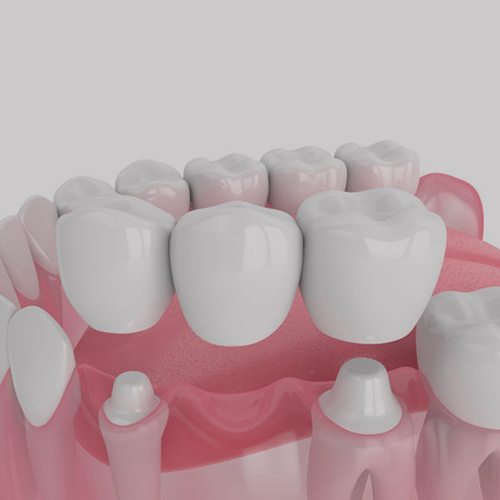Table of contents
Looking and feeling great go hand in hand. And if you’re not feeling confident about your appearance, that can hold you back from being your best self. Missing teeth can affect your confidence, but they can affect more than that, too.
Missing teeth can change the way you speak and make it hard to maintain a healthy diet. Fortunately, there’s a Brooklyn cosmetic dentist who can help. Ask about a dental implant vs. bridge to help determine which option is best for you.

A dental bridge puts false teeth between two existing, natural teeth, filling in the space where one or more teeth are missing. Often, crowns are affixed to the teeth on either side of the gap, providing the false tooth or teeth with the needed support.
A dental bridge may be the better choice for you if your teeth have been missing for a long time. Time allows the bone and surrounding tissue to erode to the point of needing restoration before your bridge can be placed. If your adjacent teeth need crowns or extensive fillings now or in the near future, a dental bridge may be the more practical choice than an implant.
A major difference between a dental implant vs. bridge is how your new teeth are held in place. A dental implant is attached as a peg directly inserted into your gum or jaw. A prosthetic tooth is then attached to the implanted peg.
Bone mass decreases rapidly following the loss of a tooth or teeth. The type of dental implant bridge that your Brooklyn family dentist uses depends largely on how much jaw bone you still have. There are two types of implants:
If excessive bone loss is evident, you may need to undergo additional procedures — such as a bone graft or sinus lift — before the implant can be placed. In this case, a traditional bridge may make more sense for you.
While you’re deciding whether to choose a dental implant vs. bridge, take the following into consideration:
The benefits of replacing lost teeth are great, whether you choose a dental implant bridge or a more traditional bridge. Both procedures:
As with any medical or dental procedure, whether dental implant vs. bridge, there are several risks. After receiving your false teeth, you may experience some discomfort and pain, which is usually alleviated by prescription or over-the-counter pain medication. Expect some swelling at the site. Rarer risks for both procedures include infection, nerve damage, and damage to the blood vessels and tissue surrounding the site of the procedure. These risks are greater with a dental implant, but the incidence is still low.
After your implant or bridge is in place, you’ll have restrictions on chewing for several days or weeks, depending on the procedure. Swelling and pain should last no more than a few days. Avoid drinking through a straw, and say no to sticky or very hard foods. Practice good dental hygiene and visit your Brooklyn dentist often — and you’ll keep that winning smile shining bright.
Do you have any questions about the Dental Bridge vs Implant in Brooklyn? For more information or to schedule an appointment with the best-rated Brooklyn dentist Khabensky DDS Khabensky DDS of Family Cosmetic & Implants Dentistry of Brooklyn? Please contact our dental clinic for consultation with the dentists Alex and Igor Khabensky DDS.